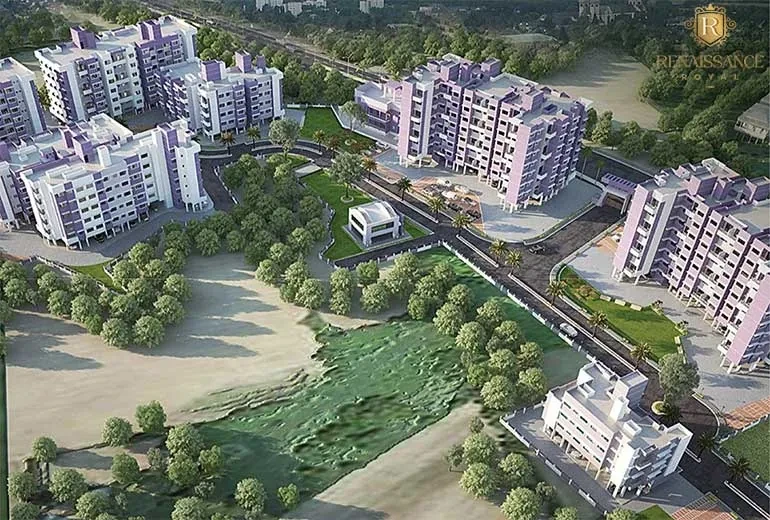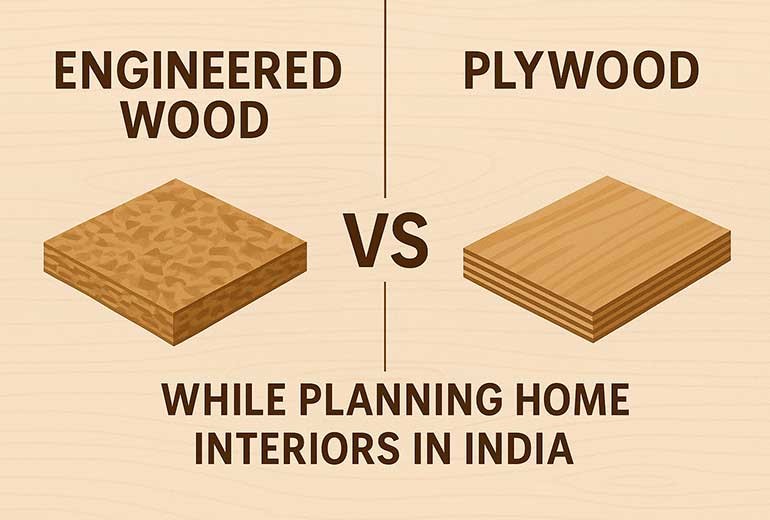
“When it comes to planning home interiors, the choice of materials can significantly impact the aesthetics, durability, and cost of your project. Two popular choices for furniture, cabinetry, and wall panelling are Engineered Wood and Plywood. Both have their advantages and unique characteristics. Here's a detailed comparison to help you make an informed decision.”
1. Composition & Manufacturing
Plywood is made by layering thin sheets of wood veneer and bonding them with strong adhesives under high pressure and temperature. The grain of each layer is alternated to give the material strength and reduce warping.
Engineered Wood is a broader category that includes materials like MDF (Medium Density Fiberboard), HDF (High Density Fiberboard), particle board, and others. These are made by breaking down wood into fibers or particles, mixing them with resins, and pressing them into sheets.
2. Strength & Durability
- • Plywood is generally stronger and more durable than engineered wood. It holds screws and nails better, making it ideal for heavy-duty furniture like beds, wardrobes, and kitchen cabinets.
- • Engineered Wood varies in strength depending on the type. HDF and MDF are denser and stronger than particle board but still not as robust as plywood. These are better suited for decorative panels or light-use furniture.
3. Moisture Resistance
- • Plywood especially BWP (Boiling Waterproof) grade, offers excellent moisture resistance, making it a popular choice for kitchens, bathrooms, and utility areas in Indian homes.
- • Engineered Wood tends to absorb moisture if not properly laminated or sealed, which may lead to swelling or warping over time.
4. Finish & Aesthetics
- • Plywood, while strong, may need more surface preparation for a fine finish. However, it can also be veneered or laminated for a premium look.
- • Engineered Wood offers a smoother surface, making it ideal for high-end finishes, paint, or laminates. It is preferred for modular furniture due to its consistency and ease of customization.
5. Cost Factor
- • Plywood is more expensive, but the investment pays off in the long run due to its durability and strength.
- • Engineered Wood is generally more budget-friendly than plywood. MDF and particle board are cost-effective options for mass-produced or temporary furniture.
6. Sustainability & Environmental Impact
- • Plywood typically uses more solid wood, which may have a higher environmental impact unless sourced from sustainable forests.
- • Engineered Wood uses smaller wood particles and can be made from recycled wood, making it an eco-friendlier option.
7. Ideal Applications in Indian Homes
| Application Area | Recommended Material |
|---|---|
| Kitchen Cabinets | BWP Plywood |
| Wardrobes | MDF / Plywood |
| TV Units & Wall Panels | Engineered Wood |
| Beds & Storage Units | Plywood |
| Budget Furniture | Particle Board |
Final Thoughts
Choosing between engineered wood and plywood depends on your budget, usage, and desired finish. For long-term durability and strength, plywood remains the preferred choice for Indian homes, especially in high-moisture areas. However, engineered wood offers great design flexibility and affordability, making it perfect for aesthetic and low-load applications.
Combining both smartly in your interior design can give you the best of both worlds—a home that is stylish, sturdy, and value-for-money.




0 comments
Be the first to comment.